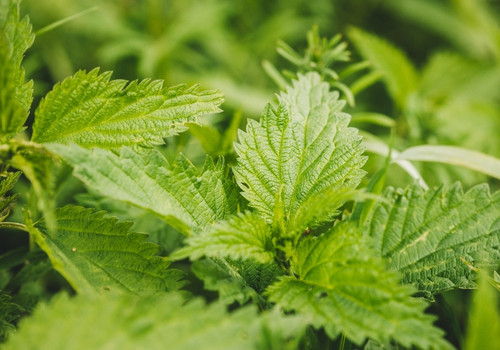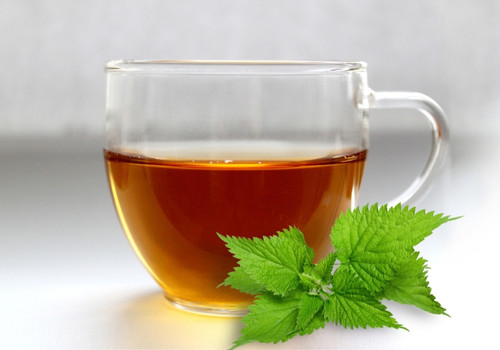Nettle (Urtica dioica)
Common Names: Stinging nettle, common nettle
Family: Urticaceae
Introduction:
Nettle, a powerful herb full of health benefits. Nettle is a versatile and nutrient-rich herb renowned for its natural anti-inflammatory, diuretic, and antihistamine properties, it thrives in nitrogen-rich soil, commonly found in woodlands, meadows, and disturbed areas such as roadsides and gardens across Europe, Asia, and North America. Ideal for gardeners, herbalists, and health enthusiasts, this comprehensive botanical catalog covers cultivation tips, culinary uses and natural remedies. Embrace the healing power of nettle to enhance your wellness routine, alleviate allergy symptoms, and boost hair and skin health.

Description:
Nettle is a perennial herbaceous plant known for its stinging hairs that cover the leaves and stems. It grows up to 1-2 meters tall during the summer and dies down to the ground in winter. The leaves are opposite, heart-shaped, and have serrated edges. Small, greenish or brownish flowers form in dense clusters from spring to autumn. Despite its stinging nature, it is a valuable plant widely used in herbal medicine, cooking, and gardening.
History:
The history of nettle and it’s use through out spans thousands of years, from the Bronze age, where it was used to make cloth similar in texture to linen or used to treat arthritis and lower back pain, to the Middle Ages as a herbal remedy for pain and various ailments but also as a vital source of nutrition during times of famine, till Modern times, where upon it’s utilized for it’s anti-inflammatory, diuretic, and analgesic properties. Nettle has been cultivated and used in a variety of ways with its uses documented across various civilizations and cultures. This resilient plant has been harvested for its fibers, medicinal properties, and nutritional benefits since ancient times. And has made a mark on various civilizations influencing even their mythology and folklore. Whether it’s used in protective folk rituals to ward off evil spirits or as a symbol of the god Thor and his mighty lightning.
Culinary Uses:
it’s young leaves are not only nutritious but versatile in the kitchen. They are rich in vitamins A and C, iron, potassium, manganese, and calcium, making them a healthy addition to various dishes. Nettle can be cooked similarly to spinach, making it a delicious and healthful green for soups, pestos, and sautéed dishes. Beyond these uses, it is also celebrated for its role in herbal tea, offering a range of health benefits. Nettle Tea has been known to have diuretic properties helping to flush toxins from the body, It can provide relief from joint pain and inflammation, further more acting as a natural antihistamine, it may reduce symptoms of seasonal allergies and it’s especially beneficial for those who are anemic or looking to boost their iron intake. Enjoying nettle tea regularly can be a simple, soothing way to incorporate the benefits of nettles into your diet.
Making Nettle Tea:
You’ll need 1 tablespoon of fresh nettle leaves (or 1 teaspoon of dried nettle) and 1 cup of boiling water.
Rinse the leaves under cold water. If using fresh nettle, chop the leaves to release their essential oils.
Place the leaves in a teapot or cup and pour boiling water over it. Cover and steep for about 5 minutes.
Strain the tea to remove the leaves. You can sweeten it with honey or lemon for taste if desired.
Discover Organic Greek Nettle
Elevate your wellness with our pure, Organic Greek Nettle. Perfect for teas, remedies, and enhancing your daily health routine.

Cultivation:
Growing nettle in your garden or on your property can be both rewarding and beneficial, providing easy access to its leaves for culinary, medicinal, and gardening uses. Nettle is known for its hardiness and ability to thrive in a wide range of conditions, but with a little knowledge, you can optimize your harvest.
Soil and Location:
Nettle prefers a rich, fertile soil high in nitrogen, but it is adaptable and can grow in a variety of soil types. It thrives in partially shaded to fully sunny locations. If you’re planting it in your garden, consider designating a specific area for it, as it can spread quickly and become invasive if not managed.
Planting:
You can start nettle from seeds, cuttings, or root division
Seeds:
Sow nettle seeds in early spring, lightly covering them with soil. Keep the soil moist until germination, which typically occurs within 7-10 days.
Cuttings:
Take cuttings from an established plant in spring or autumn. Plant the cuttings in moist soil, and they will root quickly.
Root Division:
Divide the roots of an established plant in autumn or early spring and replant the divisions.
Watering and Care:
Nettle does not require a lot of water once established but keep the soil moist in dry conditions to encourage growth. Mulching around the plants can help retain moisture and suppress weeds. It is relatively low maintenance, but it’s beneficial to cut back the plant before it seeds to control its spread and encourage new, tender leaves.
Harvesting:
The best time to harvest nettle is in the spring, when the plants are young and the leaves are most tender. Always wear gloves to protect yourself from the stings. Cut the top third of the plant to encourage bushier growth and multiple harvests throughout the season. You can also harvest it in the fall for use in teas and dried preparations.
Propagation:
Nettle spreads easily through its root system and by seed. To prevent it from taking over, you might want to consider growing it in containers or using barriers in the ground to contain its spread.
Conclusion:
Nettle (Urtica dioica) stands out as a testament to nature’s bounty, offering a wealth of health benefits, nutritional value, and historical significance. By embracing it in your garden and diet, you unlock the door to natural wellness and a deeper connection with herbal traditions. Explore the ancient and modern uses of nettle to enrich your life and environment.
Frequently Asked Questions About Nettle
Q: Can touching nettle really cause burns?
A: Yes, nettle leaves and stems are covered in tiny hairs that can inject chemicals causing a stinging sensation and temporary redness or irritation. Wearing gloves when handling nettle can prevent this.
Q: How can I use nettle to relieve allergy symptoms?
A: It is believed to carry natural antihistamine properties that can help mitigate allergy symptoms. Drinking nettle tea or taking supplements during allergy season may provide relief.
Q: Is nettle tea safe to drink every day?
A: Yes, for most people, drinking it’s tea daily is considered safe. However, it’s important to start with smaller quantities to see how your body reacts. Pregnant women or individuals with certain health conditions should consult a healthcare provider first.
Q: Can nettle help with hair growth?
A: It is rich in vitamins and minerals that are beneficial for hair health. It’s believed to stimulate hair growth and reduce dandruff when used as a rinse or in hair care products.
Q: How do I prevent nettle from spreading in my garden?
A: Nettle can be invasive, so it’s wise to plant it in a contained area or use barriers to prevent it from spreading. Regularly harvesting the tops can also control its growth by preventing seed formation.
Q: What’s the best way to remove the sting from nettle leaves before eating?
A: Blanching the leaves for a few seconds in boiling water or drying them removes the chemicals that cause stinging, making them safe to eat.
Q: Can nettle be used as a fertilizer in the garden?
A: Yes, nettle makes an excellent natural fertilizer. You can create a variant of it’s tea by soaking the leaves in water for a few weeks and then use the diluted solution to water plants, providing them with a nutrient boost.
Q: Are there any side effects to consuming nettle?
A: It is generally safe when consumed in moderate amounts. However, some people may experience stomach upset, diarrhea, or allergic reactions. It’s best to consult with a healthcare professional before starting any new herbal remedy.
Q: How long can I store dried nettle leaves?
A: It’s dried leaves can be stored in an airtight container in a cool, dark place for up to a year without losing their potency.
Q: Can nettle interact with medications?
A: Nettle can interact with certain medications, including blood thinners, blood pressure medications, diuretics, and diabetes drugs. Always consult a healthcare provider before adding nettle to your regimen if you are on medication.
Q: Where can I find Nettle?
A: Nettle grows as a wild herb in the mountainous regions of Greece. You can buy it from specialty tea shops, health food stores and reputable online retailers. Always look for a certified organic product to ensure the highest quality. Discover the Greek, certified 100% organic, high quality Premium Nettle LelexTea in our online store, LelexTea or in our local store.

Our crops are grown with love and respect for Nature.

The herbs are of excellent quality handpicked.

The combination and proportions of herbs are based on ancient and new recipes.

Our packages are protected from the sun, moisture and temperature.
Notice:
Although nettle is generally safe for culinary use, medicinal use should be approached with caution and everything mentioned is for educational purposes only. Pregnant and nursing women should always consult a healthcare professional before using nettle as a remedy.
